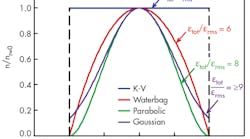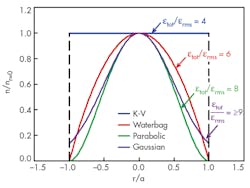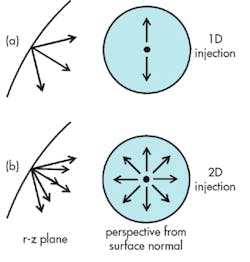Current research in vacuum RF amplifiers focuses on attaining and reaching beyond the millimeter-wave, submillimeter-wave, and even terahertz frequencies. However, as these devices push to higher frequencies, electron-emittance effects cause RF defocusing in the high-power energy-extraction sections of amplifier circuits.
Adapting techniques used in high-energy physics research for RF amplifiers, David R. Whaley with L-3 Communications in Santa Clara, Calif., was able to devise enhancements to several formulated expressions. In doing so, a more accurate prediction of electron-beam behavior was possible for microwave to terahertz frequency signals. In particular, Whaley’s method reduces the time-consuming numerical analysis and optimization process associated with electron-beam behavior.
Increased levels of interception current and beam expansion are seen as a product of the increased radial space charge forces around the bunched sections of vacuum RF amplifiers. Using expressions to quantify the electron emittance effects for cold electron beams, Whaley developed numerical simulations that could be applied to thermionic and field-emitter cathodes.
The general formulation developed by Whaley was confirmed using numerical optics simulation techniques for a diverse number of beam properties commonly observed in vacuum RF amplifier devices. The formulated expressions’ accuracy also was confirmed with respect to current, magnetic fields, beam size, emittance, and RF frequency regimes for both device types. See “Practical Design of Emittance Dominated Linear Beams for RF Amplifiers,” IEEE Transactions on Electron Devices, June 2014, pp. 172.


